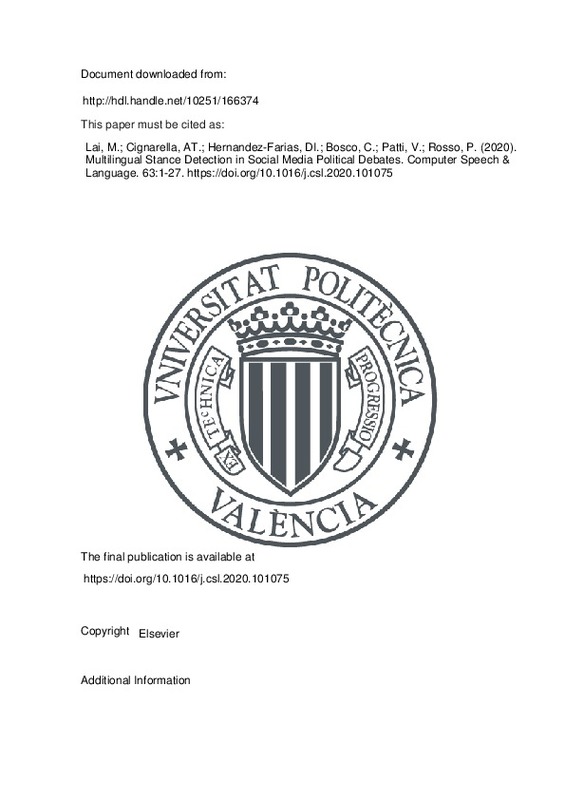JavaScript is disabled for your browser. Some features of this site may not work without it.
Buscar en RiuNet
Listar
Mi cuenta
Estadísticas
Ayuda RiuNet
Admin. UPV
Multilingual Stance Detection in Social Media Political Debates
Mostrar el registro completo del ítem
Lai, M.; Cignarella, AT.; Hernandez-Farias, DI.; Bosco, C.; Patti, V.; Rosso, P. (2020). Multilingual Stance Detection in Social Media Political Debates. Computer Speech & Language. 63:1-27. https://doi.org/10.1016/j.csl.2020.101075
Por favor, use este identificador para citar o enlazar este ítem: http://hdl.handle.net/10251/166374
Ficheros en el ítem
Metadatos del ítem
| Título: | Multilingual Stance Detection in Social Media Political Debates | |
| Autor: | Lai, Mirko Cignarella, Alessandra Teresa Hernandez-Farias, Delia Irazu Bosco, Cristina Patti, Viviana | |
| Entidad UPV: |
|
|
| Fecha difusión: |
|
|
| Resumen: |
[EN] Stance Detection is the task of automatically determining whether the author of a text is in favor, against, or neutral towards a given target. In this paper we investigate the portability of tools performing this ...[+]
|
|
| Palabras clave: |
|
|
| Derechos de uso: | Reconocimiento - No comercial - Sin obra derivada (by-nc-nd) | |
| Fuente: |
|
|
| DOI: |
|
|
| Editorial: |
|
|
| Versión del editor: | https://doi.org/10.1016/j.csl.2020.101075 | |
| Código del Proyecto: |
|
|
| Agradecimientos: |
Cristina Bosco and Viviana Patti are partially supported by Progetto di Ateneo/CSP 2016 (Immigrants, Hate and Prejudice in Social Media, S1618_L2_BOSC_01). The work of Paolo Rosso was partially funded bythe Spanish MICINN ...[+]
|
|
| Tipo: |
|







![[Cerrado]](/themes/UPV/images/candado.png)


